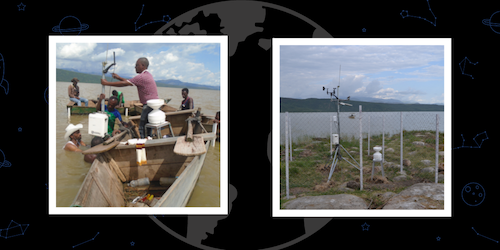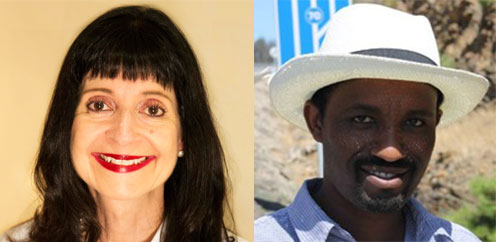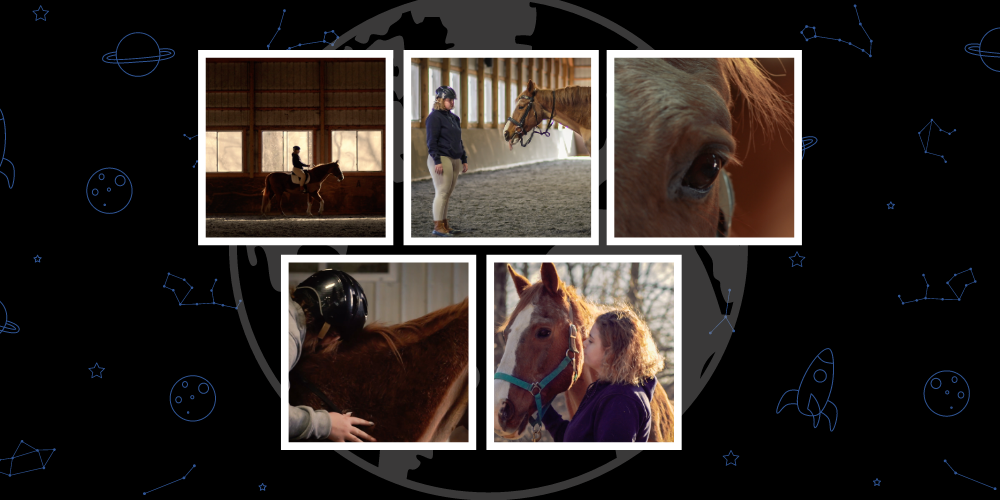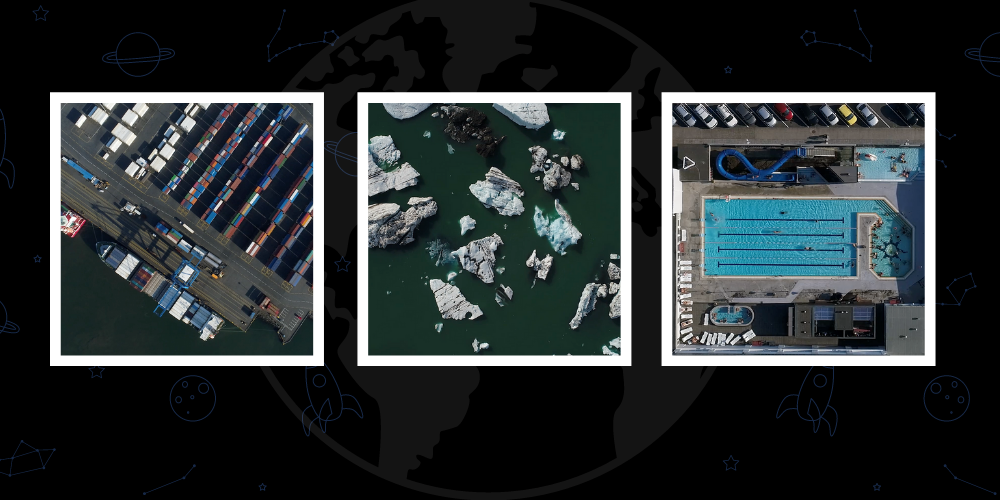This month audiences can screen the film A Thousand Suns, curated by the Global Oneness Project, on the Planet Classroom Network. A Thousand Suns tells the story of the Gamo Highlands of the African Rift Valley and the unique worldview held by the people of the region. Shot in Ethiopia, New York, and Kenya, the film explores the interconnected worldview of the Gamo people and how it is fundamental in achieving long-term sustainability, both in the region and beyond.
Dr. Thomas Torora Minda is an atmospheric scientist and researcher based at Arba Minch University (AMU). As a scientist, educator, and researcher, he is focused on understanding the weather and climate dynamics of the complex landscape of Ethiopia in general and the Gamo highlands in particular.
The Global Search for Education is honored to welcome Thomas Minda.
Thomas, the film A Thousand Suns was made over a decade ago. When you think about young students discovering this story of the Gamo Highlands and the extraordinary community that lives there, what do you hope they will be interested in exploring?
I hope the young generation will be interested in the Gamo people’s knowledge and practices, which were so strong during my father’s time and before. As seen in the film, the Gamo has an indigenous stewardship towards nature. They have been effectively managing forest resources, land and wildlife before the introduction of scientific understanding to the highland areas, using indigenous structures.
Given all you learned in your research about this community, how is the role of indigenous stewardship more relevant today?
Gamo people give respect to forest resources. For instance, they have a practice of conserving indigenous species in the form of Kasha. Kasha is a traditional forest enclosure habit for cultural/traditional or religious purposes. In addition, this forest patch is used as a seed source for important tree species in home gardens, rangelands and farmlands. Any plant species such as timber and non-timber forest products can’t be used for domestic purposes except for specified groups of society. Utilization and management practice of this enclosure is usually decided by Dubusha (a local assembly of Gamo Highlands chaired by elders, still an active culture among the Gamo). Dubusha has a traditional rule that governs economic, social and cultural issues of the Gamo people. This traditional rule has a strong emphasis on nature conservation and utilization issues like forest, farmland, rangeland, communal land, rivers, wildlife and others. If someone uses or destroys resources out of the traditional rules (Woga) and if there is no witness, the local assembly (Dubusha) asks the people who committed those issues. The person may admit his disobedience and a little punishment is applied as per the rule. If the person does not admit, they leave the issues for Gomme (sin in traditional beliefs) by telling to the mountains in the highlands, to the lakes in lowland, and the rivers in the valleys. They believe that they see signs on a person’s domestic animals, crops, and children and also on the huts. The Gamo community voluntarily engages as a fire brigade in case forests catch fire. This is also an active culture exercised these days.
Land is an important natural resource for Gamo people. It has economic, social and cultural merits. It is not surprising to see a small parcel of land (such as 2m2) in Gamo Highlands. This is because they believe it has greater implications in all aspects to the people. Managing land is just a tradition, not something they are ordered to do by someone. They believe that leaving the land to be degraded has an implication – a weak farmer! Such a person is not socially respected and usually women are not interested in marrying the lazy person.The local elders advise the weak farmer to manage his land efficiently. Land management practices include planting indigenous trees on degraded land, constructing stone and soil bunds, fallowing, putting the Kalle/qooro (Bamboo pole) on a range land to protect intensive open grazing are among methodologies to protect land. The farmers have soil fertility reclamation practices: use of animal manure as fertilizer. They have a tradition of organic compost making. To make this, they collect decomposable tree leaves, herbs and bamboo leaf droppings, and use these as animal beds to ease the decomposing process in the farm at a later stage. There is also belief in praying to God in case of natural catastrophes like droughts, heavy rains and floods. The local elders and traditional nominees take the lead in this case. They believe that they can communicate with nature – the water, mountains, big trees and even clouds in the sky. These leaders have the knowledge of identifying signs before catastrophes. They can forecast the occurrence of rain, heavy sun, etc. But these issues are not documented and studied to date.
Wildlife management and Gamo people have synergy. It is believed that wildlife such as lions, elephants, and tigers are considered as strong creatures. Wildlife is taken as an icon of a strong and successful farmer, warrior and leader. Names such as Gaamo (meaning lion), Dangarsa (meaning elephant) and Maahe (meaning tiger) can be the first name of a successful and strong person in Gamo highlands. This is a good indicator of human-wildlife synergy in the Gamo Highlands.
What lessons should students around the world take away from these traditions?
I think the Gamo people’s attitude and practice towards nature stewardship is crucial to sustain the natural resources. These practices should be learned and applied by new generations.
Based on your research, what are some specific ways you recommend that young people in a modern world try to connect better with nature and lessen the gap that has been created?
As a natural scientist and a person who follows the Bible, I’m personally not a supporter of the spiritual aspects of Gamo people. However, their ways of conserving forests, land and wildlife resources are remarkable and should be important lessons to be learnt these days. We should not ignore good lessons from the past. My recommendations are as follows. First, we should teach our students the great indigenous knowledge that has been practiced by Gamo people for centuries. Actually, some of the Gamo cultures are still active, for example, peace and reconciliation Woga, which has made the Gamo zone the most peaceful place in the country. We need to study and teach our students about the Gamo culture in order to maintain nature. Disciplines such as environmental anthropology/sociology, etc. should explore the Gamo Wogas related to nature conservation. These studies should also be community-based. The community, especially the elders, should be engaged in teaching and transferring their knowledge to younger generations. Students should not only learn about the environment but also the theoretical knowledge they get should be practiced and exercised. These days, the majority of the Gamo people are Christian (Ethiopian Orthodox and Protestant) religion followers. So, the Church should teach her members regarding safeguarding the environment. Academic institutions such as Arba Minch University, the government and other stakeholders should work with the Church.
What research are you working on now in this area?
As an atmospheric scientist, I teach my graduate students and do research on understanding the weather and climate dynamics of the complex landscape of Ethiopia in general and the Gamo Highlands in particular. As a mountainous country, Ethiopia is highly sensitive to climate change. Besides, our economy (>85%) mainly consists of agriculture. And the farming system is a rainfed agriculture, which is highly sensitive to climate forcings. Our harvests are far below our potential. Droughts are recurrent and intensified in Ethiopia as per the ongoing climate crises. Being dependent on imported food is also not sustainable as shown in the current Ukraine crisis. Hence, the knowledge of the present and future climate is crucial for us. In my PhD, I established the Gamo Ethiopian Meteorological Stations (GEMS) network with the support from NUFFIC in the Netherlands. 6 automatic weather stations (AWS) have been operating in remote regions in the Gamo Highlands since April 2016. With additional help of VLIR-UOS, we further strengthened the network to 9 AWS and 6 automatic rain gauges. We use the GEMS data for teaching younger generations and for research. I translate meteorological knowledge into applications – agriculture, water resources, air-quality and land resources to find solutions to adapt and mitigate climate change. My findings show that the future climate will negatively influence our food security and the environment, which implies actions must be taken today.
I played a leadership role in managing the Belgium based VLIR-UOS project. The project is among the 6 projects focusing on understanding and addressing land-degradation problems in the Gamo region. The research sought to quantify the land-degradation status in the Gamo Highlands and in the valley around lake Abaya and lake Chamo. A serious loss of biodiversity in the mountains resulted in catastrophic land-slides, gully and sheet erosion, soil acidity in the highlands and soil salinity in the lowlands. These challenges caused the transport of increased sediment in lakes which declined the aquatic biota and increased lake-levels. We continue to address the key land-degradation challenges while strongly engaging the local community. Interested stakeholders can join and work with us for a shared global benefit. The Gamo region is a center of cultural and biological diversity.
I was recently appointed as a director for Grants and Collaborative Project Management in AMU. AMU is among the 8 research universities in Ethiopia. We teach over 30,000 students and also have over 2,000 academic and research staff. The problems are countless, however, resources are extremely limited. We live in one world in which we share the same atmosphere. Knowledge and resources should be shared to address our common challenge – the climate crisis. I see south-north partnership is the strategy to have a well-functioning environment. Our door is open for collaboration – just join us!
Thank you Thomas!
C. M. Rubin and Thomas Minda
Don’t Miss A Thousand Suns, curated by the Global Oneness Project, now screening on the Planet Classroom Network.







Recent Comments